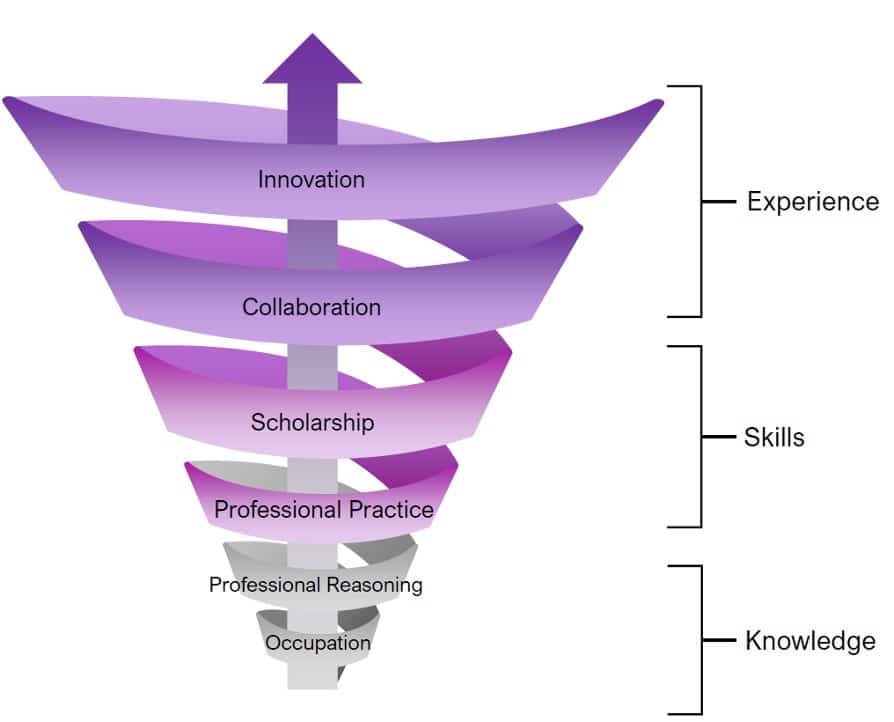O.T.D. Curriculum Design
Our curriculum has been intentionally designed to create occupational therapists who are competent, ethical, culturally responsive, evidence-based, and collaborative scholars and leaders, prepared to engage in lifelong learning, advance the profession, and support health for all.
 Des Moines University’s O.T.D. curriculum is designed as a spiral. A spiral curriculum promotes deepening of understanding and skills through successive encounters and building of content (Bruner, 1960; Harden & Stamper, 1999). The value of a spiral curriculum is that there is consistent reinforcement, movement from simple to complex, repetitive and progressive development of concepts, and ongoing application and integration. Occupational therapy practice is not compartmentalized nor is it simple and straightforward. Thus, occupational therapy education calls for an innovative and contemporary curriculum which prepares students in a way that is reflective of their future practice.
Des Moines University’s O.T.D. curriculum is designed as a spiral. A spiral curriculum promotes deepening of understanding and skills through successive encounters and building of content (Bruner, 1960; Harden & Stamper, 1999). The value of a spiral curriculum is that there is consistent reinforcement, movement from simple to complex, repetitive and progressive development of concepts, and ongoing application and integration. Occupational therapy practice is not compartmentalized nor is it simple and straightforward. Thus, occupational therapy education calls for an innovative and contemporary curriculum which prepares students in a way that is reflective of their future practice.
Within the DMU O.T.D. curriculum, courses are set up in a logical sequence to promote student learning and success. There are three phases to the curriculum: Knowledge, skills, and experience. Within these phases, our six themes guide how our curriculum is spirally integrated: Occupation, professional reasoning, professional practice, scholarship, collaboration, and innovation.
The O.T.D. curriculum at DMU focuses on equipping our students, future occupational therapists, with the knowledge, skills, and experiences needed to be effective and successful occupational therapists. They will be prepared to serve individuals, communities, and populations across the lifespan and in a variety of settings. The curriculum focuses on what is current in the field of occupational therapy as well as the future of the profession so that DMU O.T.D. graduates are prepared to enter both traditional and emerging areas of practice that fit well with their needs, skills, and interests.
References
Bruner, J. S. (1960). The Process of Education. Harvard University Press.
Harden, R. M., & Stamper, N. (1999). What is a spiral curriculum? Medical Teacher, 21(2), 141-143.